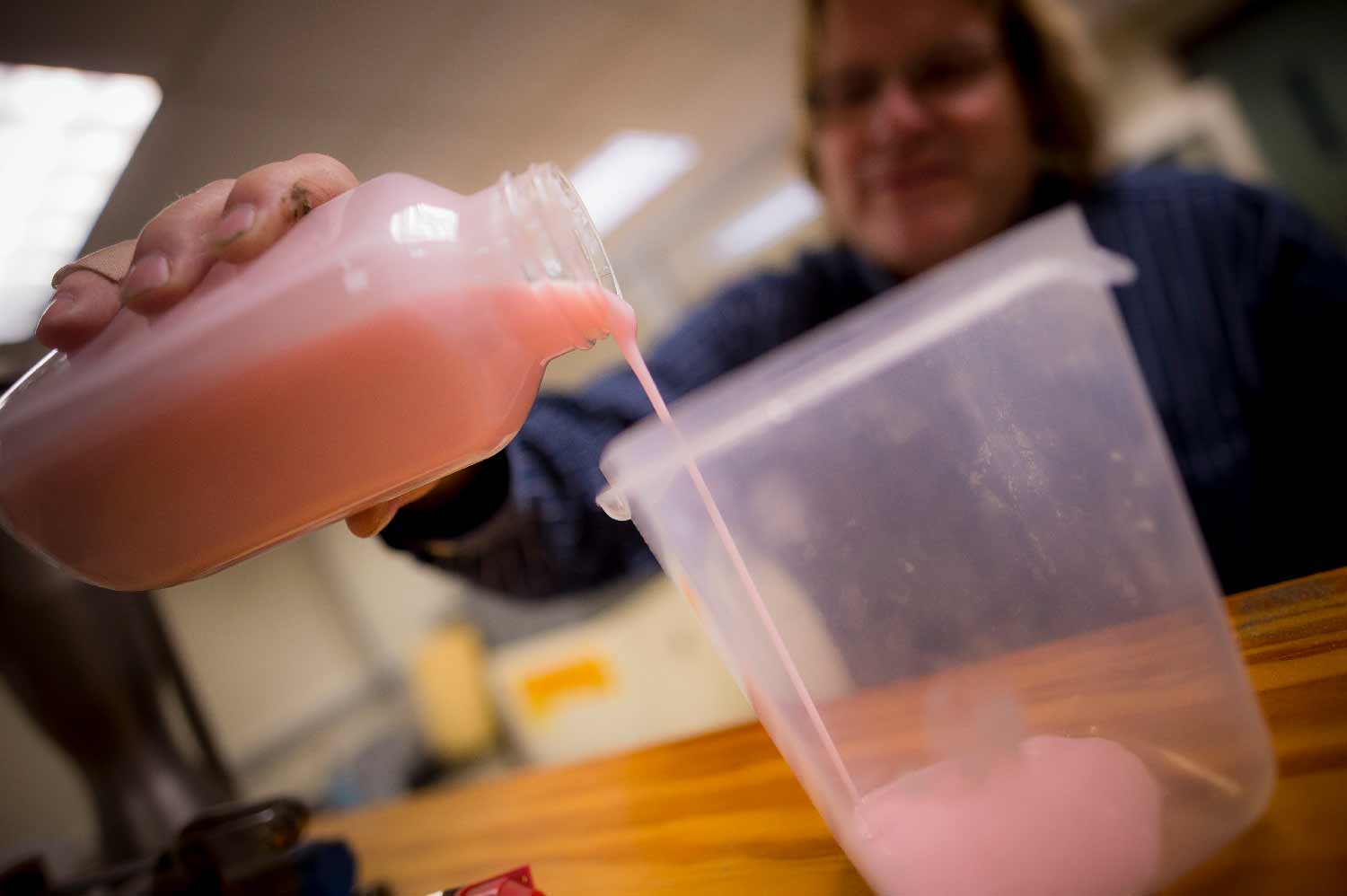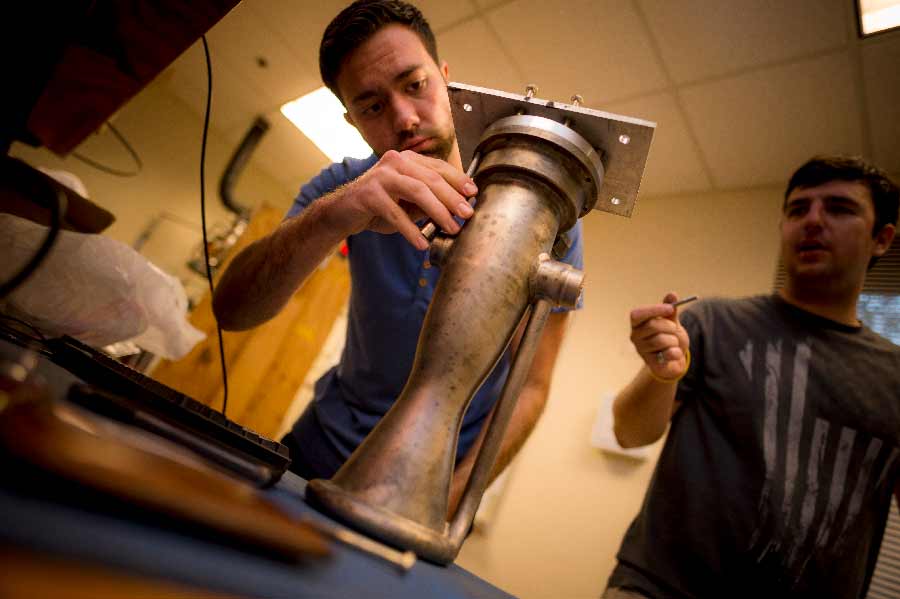
By:
- Deborah L. Jude
Published Date
By:
- Deborah L. Jude
Share This:

Photos by Erik Jepsen/UC San Diego Publications
Undergrads Create New Rocket Fuel as Part of Engineering Design Class
How many undergraduates can say they published a paper on a new rocket fuel? Students in a mechanical and aerospace engineering senior design class at UC San Diego can.
The Jacobs School of Engineering students and their instructor designed, tested and published a paper on rocket fuel composed of nearly 10 percent water. They found that their water-infused fuel performed as well, if not better, than pure rocket fuel. The study was presented at the Joint Army Navy Air Force (JANNAF) Liquid Propulsion meeting in December.
The class is 155B, one of the Mechanical and Aerospace Engineering Department’s signature project-based senior design classes. It’s taught by Steve Harrington, a UC San Diego alumnus. Harrington is a fluid dynamics and thermodynamics expert and founder and CEO of two San Diego companies, Flometrics and Chilldyne.
“Currently, two types of rocket propellants are widely used—solid and liquid,” said Robert Bertino (B.S., Aerospace Engineering, ’16), who was a student in the class. “Solid fuels are easy to store and relatively stable, but they are not as efficient as liquid fuels.”
There have been many attempts at merging the two forms by industry. The result is a rocket fuel with a gel-like consistency, but this degrades over time and leaves a residue.
To tackle this problem, the students in Harrington’s class looked into an entirely different type of fuel, called an emulsion fuel. Emulsion fuels suspend one liquid inside another. In this case, they used a mixture of water and kerosene.
“At room temperature, an emulsion fuel has a consistency similar to mayonnaise, but at high pressures it turns into a liquid,” said Bertino. “This gives it the storage benefits of a solid fuel and the performance benefits of a liquid fuel.”
The students decided to use water as a second liquid.
“Water seemed like the obvious choice for its cooling properties,” said Harrington. “The students hypothesized that its presence would help keep the pipes in the engine from heat damage.”
Not everything about the project was obvious though. In order to test the mixture, the students had to fabricate a test stand for the rocket engine.
The students build a rocket test stand that was able to measure the thrust from the engine, along with the flow rate of the rocket fuel.

Loaded up with rocket fuel, engines and their test stand, the students and their professor made their way out to the Friends of Amateur Rocketry test site.
The students’ results indicate that the mixture of water and kerosene performed just as well, if not better than, kerosene by itself. The students presented a paper describing their work to other rocket scientists from NASA and the Air Force at the meeting in Phoenix.
For one student, the experience resulted in a paying job in Harrington’s lab at Flometrics.
“After the test, I was in charge of taking all our raw data and calculating our actual results,” said Alex Batista (B.S., Mechanical and Aerospace Engineering, ‘16). “I wrote a series of functions that would calculate things like thrust and fuel consumption. Dr. Harrington hired me to work for his company performing mathematical simulations and comparing them to empirical data from his prototypes. The simulations could then be scaled to systems larger than could be built in house.”
As for the 155B class, Harrington plans to have future classes build on the advances this class made.
“Research has shown that adding metal elements to rocket fuel can improve its performance,” said Harrington. “For this year's project, we may try adding a metal compound to our rocket fuel. According to calculations done by last year's students, this should give us a 6 percent improvement in performance.”
Technical papers presented at annual JANNAF Propulsion Meetings are archived and available upon request to qualified recipients.
Share This:
You May Also Like
Stay in the Know
Keep up with all the latest from UC San Diego. Subscribe to the newsletter today.


